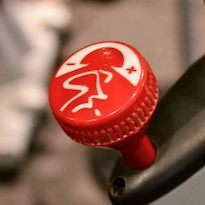Caesar Russell, one of our excellent contributors here at ICA, posted this video in the ICA Facebook group for yearly members. He’s the director at a facility in Arizona (he’s only been there a few months) and has had to clarify riding and coaching technique with students as well as instructors. This video is an effort to show why coaching resistance by telling riders how much to turn the resistance knob is ineffective. Their bikes do not have consoles, which makes it even more important that the concept of resistance be taught correctly since riders won’t see an immediate effect on their cadence, power, or heart rate.
The response by members of the group has been very positive, with instructors asking how they can share the video with their students and peers.
So we decided to post the video here and make it available to everyone.
This is Caesar’s explanation when he created the video:
A rider new to my class asked me, “Can you tell me how many turns up?” She was not new to indoor cycling, but she was accustomed to instructors telling her “how much” resistance to add via turns of the resistance knob. This is very common practice in indoor cycling. It is a simple way to communicate and is a very simple instruction for riders to follow, which is comforting. However, it leads to a misunderstanding of cadence and intensity. Resistance is not intensity. It can also lead to riding at excessive cadences with too little resistance. To illustrate why and how the instruction “how many turns up” does not work, I created this short video.


Great illustration! I have the riders listen to their body they will feel the resistance first in their quads then their knees and as the resistance builds, their ankles. I tell them at ankle resistance, it feels like you are trying to walk in water.
Another reason to avoid using “absolute” knob turns is because it assumes each bike’s resistance pads are uniform, which we know is not the case. Each bike is ridden variably. Some bikes are ridden more often and with more resistance than others, wearing down the resistance pads quicker making more or less knob turns necessary to create the same resistance per bike. I don’t think the bike maintenance schedule in any facility is that consistent to overcome this variable.
True, if you have brake pads. With the magnetic resistance found on most new bikes, that’s not an issue.
However…that still doesn’t mean it’s viable way of coaching resistance!
That’s a terrific way to illustrate that ! I’ll use it for sure.
Fantastic article! Will be sharing with my participants for sure!
great visual example…I will freely steal and use…thanks!